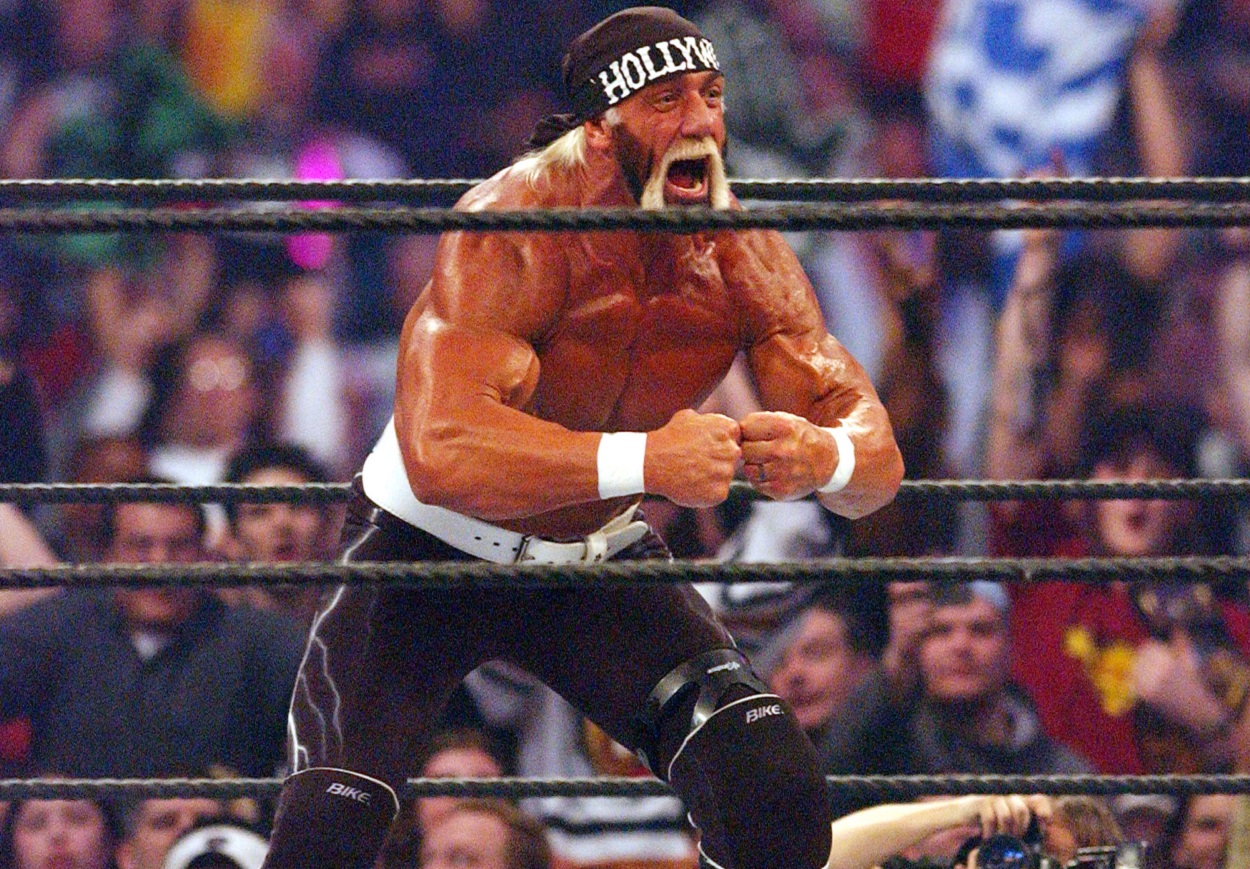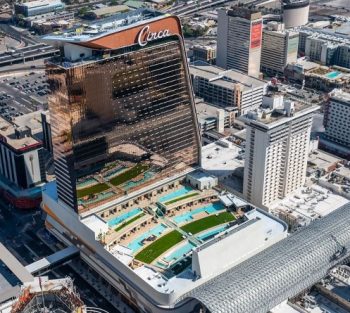Sports
Eric Bischoff Reveals the Biggest Reason Hulk Hogan Didn’t Want to Turn Heel to Join the nWo

On July 7, 1996, future two-time WWE Hall of Famer Hulk Hogan pulled off the greatest heel turn in the history of professional wrestling by joining up with Scott Hall and Kevin Nash to form the New World Order. Now, that’s a sentence where I’d usually use the word “arguably,” but there’s simply no denying the fact that the biggest babyface of all time transforming into the greatest heel of all time (yeah, I went there) isn’t the biggest turn of all time. Sorry, it just is.
After more than a dozen years of being the ultimate good guy/hero, Hogan and his red and yellow attire — really just “Hulkamania” in general — was getting stale and it was time for a change. Sure, he was still popular and selling plenty of merchandise, but pro wrestling was starting to go in a new direction at that time and the gimmick was losing its luster.
Cartoonish characters were slowly becoming a thing of the past and things were getting a little bit edgier. And with WCW needing to shake things up to compete with Vince McMahon and WWE (then the WWF), where Hogan became an icon, Eric Bischoff went to Hogan to pitch him the idea of turning heel, an idea Hulk and those around him were very concerned about for numerous reasons.
Apparently, however, one specific concern Hogan had about turning outweighed the others.
‘Hulkamania’ had run its course by the mid-90s
There’s no question that “Hulkamania” is one of the biggest phenomenons in professional wrestling history. Essentially beginning when Hogan defeated The Iron Sheik to win his first WWE title in January 1984, it became a worldwide craze and was undoubtedly the biggest thing in wrestling for years. Headlining just about every major event WWE put on for the next seven to eight years, including massive WrestleMania main events against the likes of Andre the Giant, “Macho Man” Randy Savage, and The Ultimate Warrior, Hogan was a global icon.
But as McMahon was looking to take WWE in a younger direction in the early 1990s, Hogan left the company in 1993, seemingly retiring (yeah, right). In 1994, he resurfaced and shocked the world by signing with WCW, winning their heavyweight title in his first bout with the company in a dream match with Ric Flair (the two never matched up on the big stage during Flair’s early-90s run in WWE).
The next couple of years played out as they had in WWE, although on a much smaller scale and with much less support from the audience, as Hogan remained champion for a record 469 days, finally dropping it to The Giant, who would later become The Big Show in WWE, in October 1995. In early 1996, Hogan reformed his “MegaPowers” partnership with Savage, which led to a couple of decent-enough tag matches, but when he would cut promos or give interviews, he’d get booed out of the building. “Hulkamania” had run its course and everyone knew it but Hogan himself.
Hulk Hogan was very reluctant to turn heel to join the nWo for a number of reasons, most importantly his children

On a recent episode of his highly-acclaimed 83 Weeks podcast, Bischoff recounted going to Hogan’s house to pitch him the idea of turning heel to join the nWo.
He noted how Hulk’s longtime manager, Peter Young, expressed his concern about the drop in merchandise sales, which would affect Hogan’s paychecks. At that time, heels simply didn’t sell a lot of merch, which certainly isn’t the case today. Bischoff also stated that was a concern of Hogan’s then-wife, Linda, who he says was “all about the money.”
As for Hulk, Bischoff stated he had a number of concerns himself but that his children, Brooke and Nick, who were eight and five at the time, respectively, were the primary issue on whether or not to go through with the turn.
“His primary concern was the effect it would have on his kids, the first thing that he brought up. ‘Man, I’ve got young kids that are in school. I live in a community where people are into the Hulk Hogan character. I’m a positive influence and I do a lot of positive things for charities.’
“There was a lot of genuine concern about a lot of issues but the kids were a big part of it even though they were very young, Hulk was very concerned that turning heel would have some kind of adverse effect on his kids.”
Eric Bischoff
Of course, Hogan did ultimately go through with it, and any worries he or his inner circle had about losing money went away pretty quickly.
The move to the nWo saved Hogan’s career
The much-needed heel turn finally came to fruition on July 7, 1996, at WCW’s “Bash at the Beach” event in Daytona Beach, Florida.
Hall and Nash, who had left WWE a few months earlier and had essentially “invaded” WCW as The Outsiders, and a mysterious “third man” were set to take on Savage, Sting, and Lex Luger in a six-man tag in the main event. But as the match was about to start, the “third man” wasn’t there (at least in the ring) and the action began as a 2-on-3 handicap match. Luger was eventually knocked out of the match and taken to the back, leaving Sting and Savage to battle Hall and Nash, who got the upper hand as the match came to a close.
And then it happened.
As the babyfaces were getting stomped, Hogan hit the aisle to seemingly save the day like he had countless times before. Hall and Nash fled the ring, leaving Hulk in the ring with Savage, who was lying on the ground. As he does, Hogan ripped off his shirt but then shoved the referee out of the way and hit the “Macho Man” with the famous Leg Drop, stunning the live crowd. He gave The Outsiders a thumbs up and history was made.
Hogan then proceeded to cut a scathing promo on the fans as all sorts of debris hit the ring, an obvious sign that the plan had worked. And the nWo just exploded from there. The merchandise was everywhere (cha-ching) and the turn truly saved Hogan’s career, and maybe pro wrestling as a whole as WWE moved into the “Attitude Era” just to keep up. And it’s likely that Brooke and Nick didn’t take issue with the extra money Dad was bringing in.
Of course, as WCW did, they ran the angle into the ground and the company was bought out by McMahon in 2001. Vince tried to revive the angle in WWE but it was short-lived as it just didn’t have the same appeal. Nevertheless, it was a truly historic day in professional wrestling history and will live on as such as the next 25 years go by. Hogan, inducted on his own to the WWE Hall of Fame in 2005, was inducted a second time as a member of the nWo this past April.
RELATED: Hulk Hogan Used to Think Dave Bautista Was Making Fun of Him in Promos











